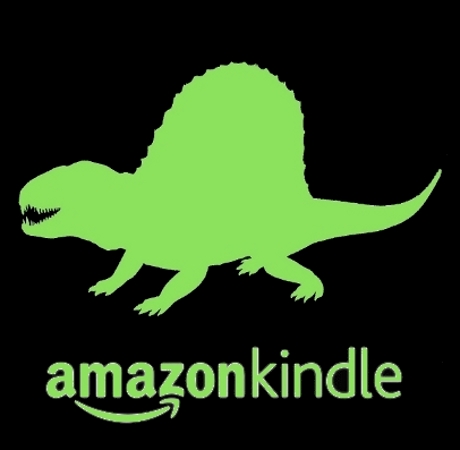Kindle, Nook and Vizplex eReader devices face mass extinction


The Amazon Kindle and the Barnes & Noble Nook have taken a pricing nose dive, hitting the rock-bottom "margin floor" and ending the age of unitasking Vizplex e-Ink devices for e-book reading.
In March of this year, I knew that it was coming. I just didn't realize that it was going to happen so quickly.
While the launch of the iPad almost certainly was a foretelling of the end of the dedicated eReader device, the actual extinction event started this week with Barnes & Noble's introduction of a $149.00, Wi-Fi only Nook, as well as a significant price drop of the Wi-Fi/3G model to $199 from $259.00.
This was followed by an immediate retaliation by Amazon, which dropped the price of their 3G Kindle 2 to $189.00.
Oh, how the mighty have fallen. Just two and a half years ago, the original Kindle was selling for $399.00.
This price war and throwing down of the proverbial gauntlet was presumably instigated by Barnes & Noble because it had finally come to the realization that it was only going to be on an equal playing field with its aggressive competitor by effectively erasing the profit margins on device sales and focusing all off its efforts on its content store.
For its primary competitor, B&N has poisoned the well.
At the same time, this also effectively put all secondary competitors which make and distribute e-reader devices for the North American and European markets out of business or in an immediately precarious position, who presumably do not have the ability to absorb such huge price cuts due to differences in volume manufacturing costs.
Companies such Spring Design, iRex, Bookeen, Kobo and Plastic Logic come to mind, just to name a few.
All of these companies e-reader devices will almost certainly be gone within the next few months unless they undercut both the Nook and the Kindle on price and have better features and cheaper content, which will be extremely difficult to do.
Of all of these companies which compete with Amazon and B&N, SONY may be able to weather the storm, but even this is questionable as their mid-range touchscreen reader product which has no wireless connectivity at all is $200, and their "Daily" wireless edition is $300.
SONY just doesn't play in the cheap, commodity ballpark, and they may not be able to stomach additional price cuts by Amazon and B&N as the dark and cold abyss of the "margin floor" approaches.
Where is that bottom? I don't know exactly, but I can tell you that it is very close to device manufacturing cost, which is somewhere between $90 and $125.
And unfortunately, Amazon and Barnes & Noble will be unable to sustain a business on the devices when it hits that low, because the price of the most important and expensive component of those Black & White e-ink readers, the Vizplex display, is controlled by a company that exclusively manufactures and owns the rights to the electrophoretic technology used in these devices, E Ink Corporation.
The "give away the razors and sell the blades" model doesn't work with dedicated e-book readers because Amazon and Barnes & Noble's customer base is increasingly becoming iPad and iPhone users, and shortly will also be Android phone and tablet users.
In which case, there's no reason to sell "razors" at all, especially since Android Tablets will be made out of commodity parts, will use cheap LCD display technology and will be far more capable, and many will be priced in the $200-$300 range and well within striking distance of the current price of dedicated e-readers.
Indeed, e-ink may be superior for daytime reading, and at least for the time being, the hardcore reader types, most of which are Boomers, will go out and buy Kindles and Nooks for their content consumption this summer at the beach.
But the Millennials will only be interested in their iPhones, iPads and Droids, with brilliant and sharp color displays, and the App versions of these e-book stores will suit most of these people fine, at least for the remaining ones that still like to read books.
In the next yearVizplex e-Ink will almost certainly be revved to color technology, but for the dedicated reading device, it will be too late.
By then, different competing high-performance transflective LCD displays will be on the scene, manufactured in huge volumes and will be licensed to a large number of manufacturers and will be used in many types of smartphones and tablets. And unlike e-Ink, these displays which will perform equally well outdoors and indoors will be cheap.
The age of the dedicated e-Reader will then be over. Content, not obsession over the devices themselves, will be king.
Did B&N herald the end of e-Reader devices by introducing such margin-hemorraging price cuts on the Nook? Talk Back and Let Me Know.